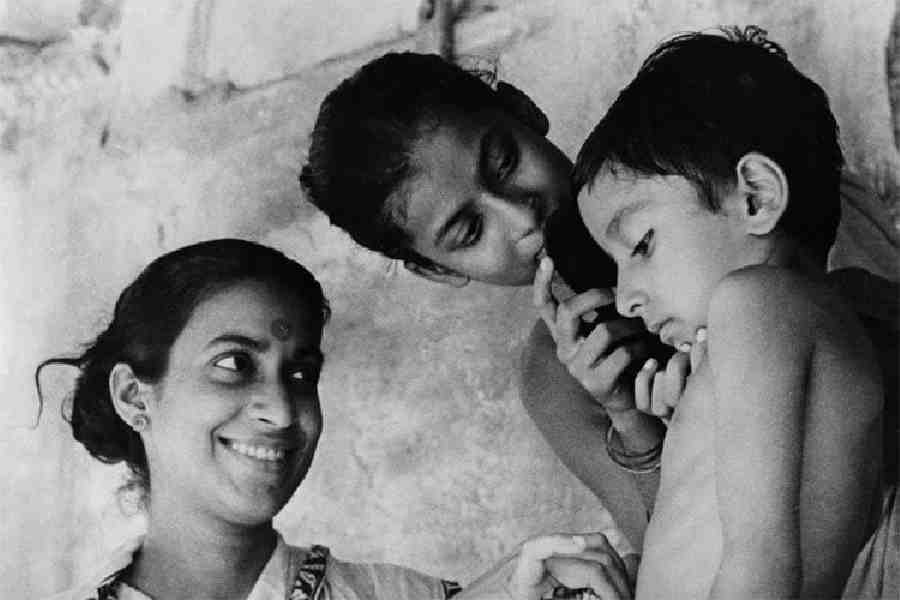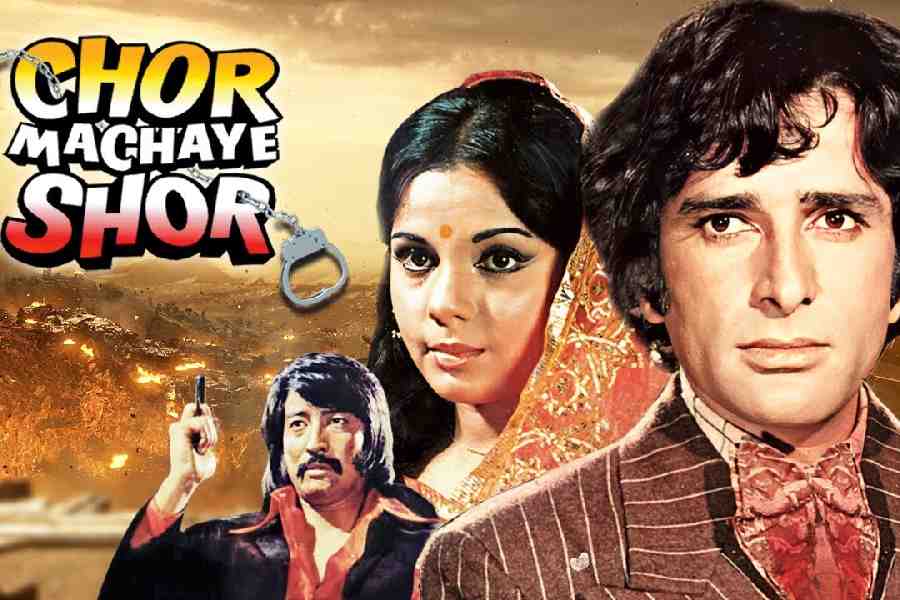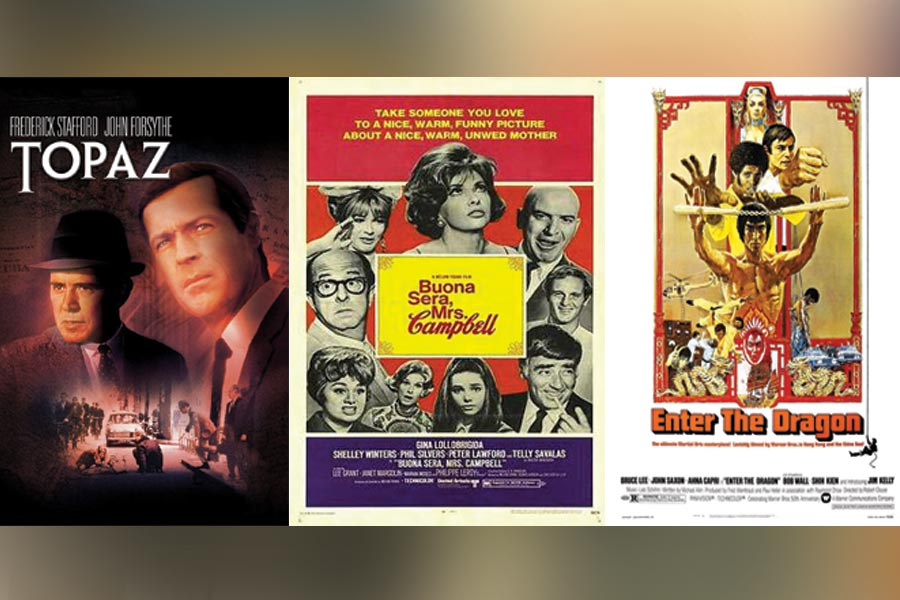The bulky projectors have given way to computers, the heavy metal reels replaced by a tiny hard drive. Life through their perch in darkened rooms looking into halls cavernous and intimate has evolved but the romance of the movies is intact for projectionists -- who were and still are the backbone of the cinema-in-theatre experience.
Mohammed Aslam Fakih and PA Salam, for instance, have been tracking time from the grainy black and white era of films such as Satyajit Ray's 1955 classic "Pather Panchali" right to the glossy colour era, travelling from the analogue to the digital age while adapting quickly to changing times and technology.

A scene from Satyajit Ray's Pather Panchali, Sarbajaya, Durga and Apu. Twitter
As cinema halls adapted to newer technology in the early 2000s, things changed. A lot of physical labour could be done with the push of a button, said Fakih. The 75-year-old has been working as a projectionist at South Mumbai's Regal Cinema for 53 years.
Salam, a projectionist at Pune's National Film Archive of India (NFAI), is 67 and has also been doing the job for at least four decades – and counting.
Representing the many thousands of people who work unseen behind the scenes of the showbiz industry, Fakih and Salam recall vividly days when 35mm or 70mm reels of film, roughly weighing 1.5 kg to 20 kg, respectively, were brought to cinema halls by helpers in the pre-digital era. While Hindi movies consisted of 15-22 reels, English films had about 10-12 reels.
Today, an entire film can be stored in a hard drive to be projected on screen. Their job as film projectionists was to load a physical film reel onto a projector, paying attention to the film's progress and changing reels as needed.
"I never thought I would operate a computer, but I did and I am still learning. Now, all we have to do is, ‘Click a button, start, click a button, stop’. Earlier we had to load the film, there was a lot of physical work that went behind it," Fakih told PTI in an interview here.
Following the transition to digital film projection, movies are now shown in cinema halls via a server or a DVD. Regal Cinema is among the many theatres that have installed a digital system alongside the old analogue equipment.
"However, things have not changed much, the duties are the same. But there is less work, there is not much exercise happening, like I don't have to push something. I am a laidback person now," he added.
Salam agreed, testifying to the need to adapt to new technology.
"Earlier, most of our time would go in putting and arranging the reel together. We couldn't even sneeze. Now we can go on a break and come back as we screen films. We have to change and adapt to time. We can't use the same old technique to watch a film," Salam added.
Fakih and Salam were two of the three veteran projectionists who received the lifetime achievement award by Film Heritage Foundation (FHF) last month. The third person to be felicitated was Lakhan Lal Yadav of Amardeep Cinema and Raj Talkies, Raipur.
Fakih was a busy man that evening -- Kamal Amrohi’s 1949 classic “Mahal” was screened by FHF on 35 mm vintage print to celebrate the analogue-era legacy of cinema at Regal Cinema.

Mahal is a 1949 Indian Hindi-language horror film produced by Savak Vacha and Ashok Kumar under the banner of Bombay Talkies, and directed by Kamal Amrohi. Wikipedia.
He played the Ashok Kumar and Madhubala-starrer to a packed audience, both old and young. As the screening began, Fakih, sitting in the approximately 300 sq ft projection room with about half-a-dozen people inside, seemed nervous.
He heaved a sigh of relief after an assistant came and assured him that the sound and quality of the film was great.
"Nobody recognises projectionists. I don’t think we get much respect as well. If the film (reel) breaks down or stops in between, people use swear words. Despite this, I wouldn’t like to do anything else other than being a projectionist. That (projection room) is my life. I don't know any other work. I try to do the best I can," Fakih added.
Salam added that he had never thought about getting recognised in the field of projection.
Both were driven to the projection room by their passion for the movies, sometimes even watching films before or after work hours.
"I come from an orthodox Muslim family where listening to radio was also not allowed, forget about watching movies. I would often bunk school and watch movies in the theatre. As a projectionist, to see the audience coming in large numbers and enjoying the movie gives me a high," Salam said.
Back in the day, Salam, who started as a projectionist at the age of 21, worked relentlessly for about 10 hours or more. He earned Rs 300 a month and remembers screening classics, including Ray’s “Charulata”, Ritwik Ghatak’s “Meghe Dhaka Tara”, “Subarnarekha”, and Shyam Benegal’s “Ankur”.

TTO Graphics
"It would take about one hour or one-and-half hour to screen a film, depending on the condition of the reel. If the reel is all ok, it would take less time. Our focus was to make sure everything goes smoothly in the projection room," said Salam, who still gets a jittery feeling before every show.
There were times the film would stop or break in between, as it happened during the show of 1974's "Chor Machaye Shor", starring Shashi Kapoor and Mumtaz.

Poster of the film "Chor Machaye Shor." Wikipedia.
"People started yelling. We had to fix things quickly," he recalled.
Fakih, who has screened English-language films such as Alfred Hitchcock’s “Topaz”, Italian movie star Gina Lollobrigida’s “Buona Sera, Mrs. Campbell”, Bruce Lee’s “Enter the Dragon”, James Cameron’s “Titanic”, as well as Hindi titles such as Ramanand Sagar’s “Geet” and BR Chopra’s “Insaf Ka Tarazu”, said it was quite "hectic" in the late 1960-70s.

TTO Graphics

TTO Graphics
"Before the digital era, one print was being run from one theatre to another. There was real hard work, and we had to rewind that print quickly, load it. That was all quite hectic then.
"In those days, we had to assemble prints, first, second parts, etc. There were two projectors. Each projector is operated by one operator, besides there would be a third person, who would rewind the reels. This was an everyday process,” Fakih, a self-proclaimed Hitchcock fan, said.
Except for the headline, this story has not been edited by The Telegraph Online staff and has been published from a syndicated feed.











